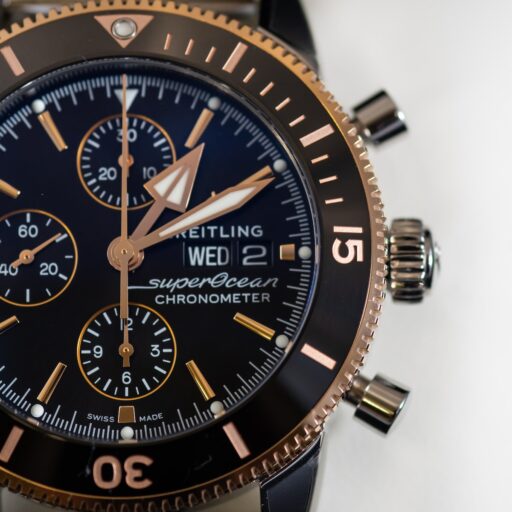Support our educational content for free when you purchase through links on our site. Learn more
Men, What Were the First Watches Ever? [2024] ⌚
Quick Answer: The first watches ever were invented in 1505 by German locksmith Peter Henlein. These early timepieces, known as the Pomander Watches, were small, egg-shaped devices with a remarkable power reserve of 12 hours. They were one of the first portable timepieces and used a boar bristle regulator instead of a hairspring. Wristwatches for men gained popularity in the early 20th century, with brands like Cartier and Omega producing iconic models.
Have you ever wondered when watches were first invented? How did they evolve from their humble beginnings to the stylish and functional timepieces we wear today? In this article, we’ll take you on a journey through time to explore the fascinating history of watches. From the first watches ever created to the modern wristwatches for men, we’ll cover it all. So, sit back, relax, and let’s dive into the world of horology!
Table of Contents
- Quick Answer
- Quick Tips and Facts
- Background: The Evolution of Timekeeping
- 1. The Pomander Watch: A Revolutionary Invention
- 2. The Rise of Wristwatches for Men
- 3. The Oldest Watch Brands
- 4. The First Wristwatch for Men
- 5. When Did People Start Wearing Watches?
- FAQ
- Conclusion
- Recommended Links
- Reference Links
Quick Answer
The first watches ever were invented in 1505 by German locksmith Peter Henlein. These early timepieces, known as the Pomander Watches, were small, egg-shaped devices with a remarkable power reserve of 12 hours. They were one of the first portable timepieces and used a boar bristle regulator instead of a hairspring. Wristwatches for men gained popularity in the early 20th century, with brands like Cartier and Omega producing iconic models.
👉 CHECK PRICE on: Amazon, Walmart, Etsy
Quick Tips and Facts
Before we delve into the detailed history of watches, here are some quick tips and interesting facts to pique your curiosity:
✅ The first watches were invented in 1505 by Peter Henlein, a German locksmith.
✅ These early timepieces were known as Pomander Watches and had a power reserve of 12 hours.
✅ The Pomander Watches were egg-shaped and portable, making them one of the first wearable timepieces.
✅ Instead of a hairspring, the Pomander Watches used a boar bristle regulator to regulate the time.
✅ Wristwatches for men gained popularity in the early 20th century, with brands like Cartier and Omega leading the way.
✅ The first wristwatch for men was created by Abraham Louis Breguet in 1810 for the Queen of Naples.
Now that you have a glimpse of what’s to come, let’s explore the background and history of watches in more detail.
Background: The Evolution of Timekeeping

Timekeeping has been an essential part of human civilization for thousands of years. From the ancient sundials to the mechanical clocks of the Middle Ages, humans have always sought ways to measure and track time. However, the concept of a portable timekeeping device didn’t emerge until much later.
The first mechanical clocks appeared in Europe during the 14th century. These early clocks were large and impractical, primarily used in churches and public spaces. It wasn’t until the 15th century that the idea of a portable timepiece began to take shape.
1. The Pomander Watch: A Revolutionary Invention
In 1505, German locksmith Peter Henlein revolutionized timekeeping by inventing the first watches ever. These early timepieces, known as the Pomander Watches, were a breakthrough in portable timekeeping technology.
The Pomander Watches were small, egg-shaped devices that could be carried in a pocket or worn as a pendant. They were powered by a mainspring, which provided a power reserve of up to 12 hours. This was a significant advancement compared to the earlier mechanical clocks, which required constant winding.
One unique feature of the Pomander Watches was their use of a boar bristle regulator instead of a traditional hairspring. The boar bristle regulator helped regulate the timekeeping accuracy of the watch, ensuring that it kept relatively accurate time.
Despite their innovative design, the Pomander Watches were not as accurate as modern timepieces. They could lose or gain several minutes a day, making them more of a novelty than a precise timekeeping device. However, they laid the foundation for future advancements in watchmaking.
2. The Rise of Wristwatches for Men
While pocket watches remained popular throughout the 16th to 19th centuries, the concept of wristwatches for men started gaining traction in the early 20th century. Until then, wristwatches were primarily worn by women as decorative accessories.
The shift towards wristwatches for men can be attributed to the practicality and convenience they offered. With the advent of World War I, soldiers found it more convenient to wear wristwatches on their wrists for easy access to time during combat. This led to an increase in demand for wristwatches among men.
Brands like Cartier and Omega played a significant role in popularizing wristwatches for men. Cartier introduced the Santos wristwatch in 1904, which was created for the aviator Alberto Santos-Dumont. This iconic timepiece not only served as a functional watch but also as a fashion statement.
Omega, on the other hand, gained recognition for its precision and accuracy. The brand’s commitment to quality and innovation helped establish wristwatches as a symbol of status and sophistication for men.
3. The Oldest Watch Brands
As we explore the history of watches, it’s worth mentioning some of the oldest watch brands that have stood the test of time. These brands have played a significant role in shaping the watch industry and continue to produce exceptional timepieces to this day.
✅ Breguet: Founded in 1775 by Abraham Louis Breguet, Breguet is one of the oldest watch brands in the world. The brand is known for its exquisite craftsmanship and innovative designs.
✅ Patek Philippe: Established in 1839, Patek Philippe is renowned for its luxury watches and complicated timepieces. The brand has a rich history of creating exceptional watches for both men and women.
✅ Vacheron Constantin: Founded in 1755, Vacheron Constantin is the oldest continuously operating watch manufacturer in the world. The brand is known for its elegant and timeless designs.
✅ Rolex: While not as old as some of the other brands on this list, Rolex has become synonymous with luxury and prestige. Founded in 1905, Rolex has consistently produced high-quality and iconic timepieces.
These brands represent the pinnacle of watchmaking excellence and continue to inspire watch enthusiasts around the world.
4. The First Wristwatch for Men
The first wristwatch designed specifically for men is credited to Abraham Louis Breguet, the founder of Breguet. In 1810, Breguet created a wristwatch for Caroline Murat, the Queen of Naples. This timepiece, known as the Breguet No. 2639, was a groundbreaking innovation.
The Breguet No. 2639 featured a rectangular case and a simple yet elegant design. It was powered by a mechanical movement and had a small seconds sub-dial. This wristwatch marked a significant shift in the perception of wristwatches as a masculine accessory.
Since then, wristwatches for men have evolved into a wide range of styles and designs, catering to various tastes and preferences. From classic dress watches to rugged sports watches, there is a wristwatch for every occasion and personal style.
5. When Did People Start Wearing Watches?
The popularity of watches and the act of wearing them can be traced back to the 16th century. However, it wasn’t until the 18th and 19th centuries that watches became more accessible to the general population.
As technology advanced and manufacturing processes improved, watches became more affordable and readily available. The industrial revolution played a significant role in the mass production of watches, making them more accessible to people from all walks of life.
The introduction of wristwatches for men in the early 20th century further solidified the popularity of watches as a practical and fashionable accessory. Today, watches are not only timekeeping devices but also fashion statements and status symbols.
FAQ

What was the first wristwatch for men?
The first wristwatch designed specifically for men is credited to Abraham Louis Breguet, the founder of Breguet. In 1810, Breguet created a wristwatch for Caroline Murat, the Queen of Naples. This timepiece, known as the Breguet No. 2639, marked a significant shift in the perception of wristwatches as a masculine accessory.
Read more about “20 Of The Best Watches For Men To Wear Right Now … ⌚️”
What was the first watch in history?
The first watches in history were invented in 1505 by German locksmith Peter Henlein. These early timepieces, known as the Pomander Watches, were small, egg-shaped devices with a power reserve of 12 hours. They were one of the first portable timepieces and used a boar bristle regulator instead of a hairspring.
Read more about “What Was the First Ever Best Watch? … ⌚”
When did people start wearing watches?
People started wearing watches in the 16th century, but it wasn’t until the 18th and 19th centuries that watches became more accessible to the general population. The industrial revolution and advancements in manufacturing processes made watches more affordable and readily available.
Read more about “Did People Have Watches in the 1800s? … ⌚”
Which is the oldest watch brand?
Vacheron Constantin is the oldest continuously operating watch manufacturer in the world. Founded in 1755, the brand has a rich history of creating elegant and timeless watches.
Read more about “Who Invented the Original Watch? … ⌚”
Conclusion

From the invention of the Pomander Watches by Peter Henlein in 1505 to the rise of wristwatches for men in the early 20th century, the history of watches is a testament to human ingenuity and craftsmanship. These timepieces have evolved from simple portable devices to sophisticated and stylish accessories.
Today, watches not only serve as functional timekeeping devices but also as fashion statements and symbols of status. Whether you prefer a classic dress watch or a rugged sports watch, there is a timepiece out there that suits your style and personality.
So, the next time you glance at your wrist to check the time, remember the rich history behind the watch you’re wearing. It’s a testament to centuries of innovation and craftsmanship.
✅ Recommended Links:
- Luxury Watch Brands
- Watch Brand Comparisons
- Guide to Buying Watches
- Men’s Watches
- Affordable Watches
- What were the first watches ever?
🔍 Reference Links:


